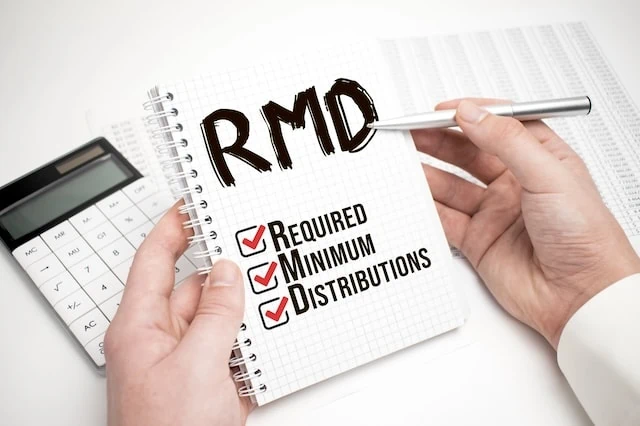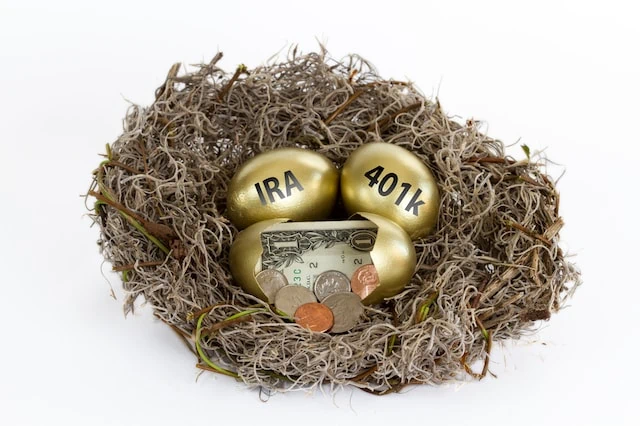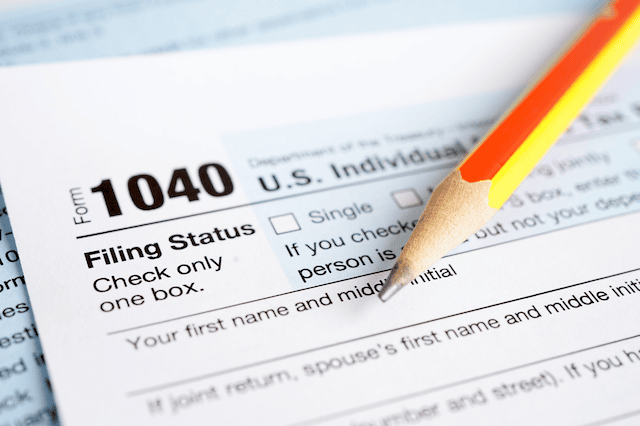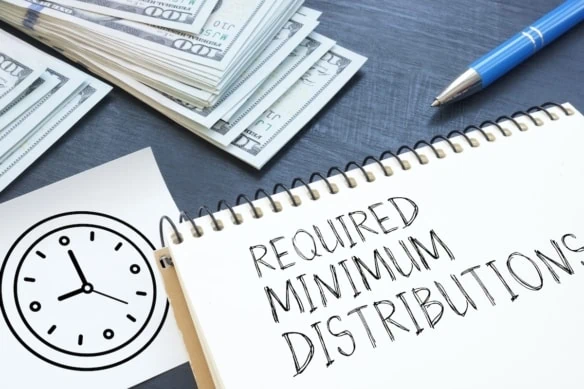If you’ve reached the age when required minimum distributions (RMD) are mandatory, make sure you withdraw the appropriate amount from your retirement accounts on time. If you don’t, you might be hit with a hefty penalty from the IRS.
Unfortunately, though, there’s often a lot of confusion about RMD requirements, deadlines, and the related penalty provisions. A lot of the uncertainty stems from recent changes to the age at which you must start taking RMDs and the fact that you get more time to take your first RMD. The penalties were recently modified, too.
But don’t worry if you’re not sure about basic RMD requirements, deadlines, and potential penalties … I’ll answer the most common questions seniors have about these RMD issues. However, if it turns out that you do have to take an RMD for 2024, start planning for it now so you don’t end up in a mad dash to beat the deadline.
Table of Contents
What’s an RMD?

You don’t pay tax on money in certain retirement savings accounts until you withdraw those funds in retirement. However, that means the IRS has to wait years, or even decades, to get a cut of those funds.
At some point, Uncle Sam wants to tax that money … and that’s what RMDs are all about. They force you to withdraw a portion of your retirement funds so that the money in your retirement accounts can finally be taxed.
What Types of Retirement Accounts Are Subject to the RMD Rules?

The RMD rules currently apply to:
- Traditional IRAs
- SEP IRAs
- SIMPLE IRAs
- 401(k) plans
- 403(b) plans
- 457(b) plans
- Profit sharing plans
- Other defined contribution plans
- Inherited Roth IRAs
You don’t have to take RMDs from your own Roth IRA or, starting this year, from Roth 401(k) accounts starting in 2024.
When Do You Have to Start Taking RMDs?

The age at which seniors must start taking RMDs has changed a couple of times over the past few years … and it will change again in 10 years.
Before 2020, you had to start taking RMDs when you turned 70½ years old. However, the age threshold was bumped up to 72 starting in 2020, and then increased again to 73 starting in 2023. So, for example, if you’re at least 73 years old at any point this year, you need to take an RMD for 2024.
But that’s not the end of the story. Beginning in 2033, RMDs won’t be required until you turn 75.
WealthUp Tip: Even if you’re 73 or older, you don’t have to take RMDs from a 401(k) account as long as you’re still working for the employer sponsoring that 401(k) plan and you don’t own at least 5% of the company.
What’s the Deadline for Taking an RMD?

You generally have to take an RMD by the end of the year for which the RMD is required. For instance, if you’re required to take an RMD for 2024 you must withdraw the money from your retirement account by Dec. 31, 2024.
However, you have until April 1 of the following year to take your first RMD. So, for example, if you turn 73 in 2024, you have until April 1, 2025, to take your 2023 RMD. (Your RMDs for 2025 and thereafter will be due at the end of each year.)
If you postponed RMDs from a 401(k) account because you were still working for the company that sponsored the 401(k) plan (as noted earlier), you’ll have until April 1 of the year following the year you leave that job to start taking RMDs from that account.
WealthUp Tip: Think twice before waiting until next year to take a 2024 RMD. On the one hand, doing so will push income from 2024 to 2025, which could be a good thing if you expect to be in a lower tax bracket next year. However, it also means you’ll have to take two RMDs in 2025—one for 2024 and one for 2025. That extra income could have negative consequences for the 2025 tax year, like putting you in a higher tax bracket or making more of your Social Security benefits taxable.
How Much Do You Have to Withdraw to Satisfy an RMD Requirement?

The amount you need to withdraw from a retirement account to satisfy the RMD requirements is based on two factors:
- How much you have in the account at the end of the previous year
- A distribution period for your age that’s based on your life expectancy
The distribution period is found in Appendix B of IRS Publication 590-B (use the publication issued for 2023 returns to calculate 2024 RMDs). In most cases, use Table III to find the distribution period if you’re taking an RMD while you’re still alive. However, use Table II if your spouse is the sole beneficiary of your account and he or she is more than 10 years younger than you. Table I is used if you inherit a retirement account from someone other than your spouse.
Here’s an example: Riley turned 77 in 2024 and has a traditional IRA. The account had $100,000 in it on Dec. 31, 2024. Riley’s spouse, who is 72 years old (i.e., five years younger than Riley), is the sole beneficiary of the IRA. The distribution period listed in Table III for a person 77 years old is 22.9. As a result, Riley must withdraw $4,367 from his IRA by Dec. 31, 2024 ($100,000 ÷ 22.9).
If you’re lucky, your IRA custodian or 401(k) plan administrator will calculate the RMD amount for you. However, if they don’t, it’s your responsibility to calculate and withdraw the proper amount.
In addition, you can withdraw more than the applicable RMD amount (it’s a “minimum”), but you can’t use any excess amount as a credit toward next year’s RMD. You also can’t roll over an RMD into another retirement account.
Can You Take an RMD From Multiple Retirement Accounts?

If you have multiple retirement accounts, whether you can take an RMD from just one account or separately from multiple accounts depends on the type of retirement accounts you own.
If you have multiple IRAs (including SEP IRAs and SIMPLE IRAs), you must calculate the RMD separately for each account. However, you can withdraw the combined total amount of RMDs from just one account or a mixture of IRAs as you see fit.
Likewise, separate RMDs must be calculated for each 403(b) account you own, but you can withdraw the combined total RMD amount from one or more of your 403(b) accounts.
On the other hand, with 401(k), 457(b), and other retirement accounts, RMDs must be calculated and taken from each separate account.
What’s the Penalty for Not Taking an RMD?

The IRS will hit you with a penalty on retirement account withdrawals that are less than your RMD amount (the penalty is applied to any shortfall).
Before 2023, an eye-popping 50% penalty applied if you didn’t withdraw enough from a retirement account.
Thankfully, that penalty was reduced to 25% starting last year. Plus, it can also be chopped down to 10% if you withdraw the full RMD amount and file a tax return reflecting the penalty by the earlier of:
- The date the IRS mails a deficiency notice for the penalty
- The date the penalty is assessed
- The end of the second year that begins after the year in which the penalty is imposed (e.g., by Dec. 31, 2026, for a 2024 RMD shortfall)
Can an RMD Penalty Be Waived?

You can ask the IRS to waive all or part of an RMD penalty if your failure to withdraw the full amount required was due to a “reasonable error” and you take “reasonable steps” to fix the error.
To request a waiver, file Form 5329 and attach a statement explaining your error and the steps you’re taking to withdraw the shortfall. The IRS will notify you if your request is denied and let you know how much you owe as a penalty.
Related: Give Cash This Holiday Season … And Cut Your Estate Tax Bill
Can You Give Your RMD to Charity?

Yes, of course, you can withdraw money out of your retirement accounts and then give it to charity. You can even get a charitable tax deduction for the donation. However, there’s a better, more tax efficient way to turn money in an IRA into a charitable donation and apply those funds against your RMD.
If you’re at least 70½ years old, you can take what’s called a “qualified charitable distribution” (QCD) from a traditional IRA and have that money go directly to charity. You can’t claim the charitable tax deduction for a QCD, but the amount donated isn’t considered taxable income (like other distributions from traditional IRAs). For 2024, a QCD can’t be for more than $105,000 (up from $100,000 for 2023).
So what’s this have to do with RMDs? QCDs count toward your RMDs for the year. So, for example, if you must take a $5,000 RMD, you can instead take a $5,000 QCD and not have any taxable income from the transaction. Depending on your federal tax rate, this could save you a lot of money (the charitable tax deduction won’t reduce your tax bill by as much).
How Do RMDs Work If You Inherit a Retirement Account?
Generally, RMDs due under the normal rules (if any) must still be taken for the year the original account owner dies. However, after that, the RMD rules that apply when the original account owner dies after 2019 primarily depend on:
- Who inherits the account
- Whether the original account owner died before or after the date RMDs are required to begin for him or her
WealthUp Tip: The RMD rules for inherited retirement accounts are extremely complicated. I’ll briefly address some of the most basic rules so that you’re aware of them, but I highly recommend consulting with a qualified tax professional if you inherit someone else’s retirement account since additional rules or exceptions might apply.
Spouse Inherits Retirement Account
If you’re the spouse of the original account holder who died, there are several possible ways in which the RMD rules work for the retirement account you inherit (assuming you don’t take a lump-sum distribution).
If you’re the sole beneficiary of the account, one option is to roll over the funds into your own IRA or otherwise elect to be treated as the original account owner. If you take this path, the start date and amount of RMDs are generally based on your age and life expectancy. This is often a good option if you’re younger than your deceased spouse and want to postpone RMDs (it’s also the most common approach).
If you’re not treated as the account owner (i.e., treated as a beneficiary) and your spouse died before RMDs were required, you can delay RMDs until the later of:
- The end of the year your deceased spouse would have turned 73
- The end of the year following the year your spouse died
The amount of the RMDs are generally based on your life expectancy.
Another option if your spouse died before reaching the age at which RMDs are required is to elect the “10-year rule,” which means all the funds must be withdrawn from the inherited retirement account within 10 years.
If you remain as a beneficiary and your spouse died after RMDs were required, you must start taking RMDs from the inherited account by the end of the year following the year your spouse died. If you’re younger than your deceased spouse, the amount of those RMDs are based on your life expectancy. If you’re older, RMDs are based on your deceased spouse’s remaining life expectancy had he or she survived.
WealthUp Tip: Starting this year, a spouse who inherits his or her deceased spouse’s retirement account and remains a beneficiary can elect to be treated as the original account owner for RMD purposes. This might be a good option if the surviving spouse is older than the deceased spouse.
Other People Inheriting Retirement Funds
A separate set of rules applies if the person inheriting a retirement account is either:
- A minor child of the original account holder who died
- Disabled
- Chronically ill
- Not more than 10 years younger the original account holder who died
These people are known as “eligible designated beneficiaries.”
If the original account owner died before RMDs were required, an eligible designated beneficiary generally must base RMDs on their own life expectancy (although there are situations where the 10-year rule applies or can be elected).
If the original account owner died after RMDs were required, an eligible designated beneficiary generally must base RMD amounts on the longer of their own life expectancy or the original account holder’s remaining life expectancy.
If the person inheriting a retirement account is not the decedent’s spouse or an eligible designated beneficiary, the 10-year rule applies.
Related: The Best REITs to Invest In for 2024








